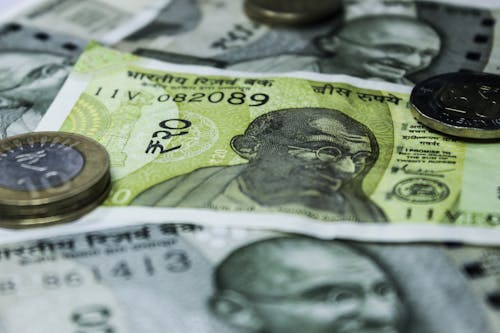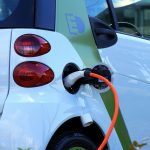Unseen Impacts of Climate Change
While much of the global conversation around climate change centers on the environmental consequences—rising temperatures, melting ice caps, and increasingly unpredictable weather patterns—there is a significant economic cost to the lack of action. Climate inaction is not just an environmental issue; it is also a severe economic challenge with widespread implications. The effects of climate change, such as more frequent and intense natural disasters, disrupted agricultural production, and rising health care costs, have the potential to cost economies trillions of dollars in the coming decades.
The true cost of climate inaction is often hidden, manifested in the form of long-term financial losses, inequality, and unanticipated public spending that goes unaccounted for in day-to-day economic discussions. While the world continues to debate policies and measures to address climate change, the economic burden of failure to act grows heavier, often in ways that are difficult to quantify but impossible to ignore.

Disaster Response and Infrastructure Damage
One of the most immediate and apparent costs of climate inaction is the damage caused by more frequent and intense natural disasters, such as hurricanes, floods, wildfires, and droughts. These events wreak havoc on communities, infrastructure, and economies, leading to costly emergency responses and extensive repairs.
The damage to infrastructure—roads, bridges, buildings, and energy systems—requires enormous investments in rebuilding and recovery. Cities and countries that face recurrent natural disasters often find themselves stuck in a cycle of destruction and reconstruction, with limited resources to invest in long-term growth or sustainable development. This not only hampers economic growth but also places a heavy strain on governments, who must allocate public funds to disaster recovery efforts rather than other essential services like education, healthcare, or infrastructure expansion.
In addition to the physical toll of these events, climate-induced disasters lead to business closures, unemployment, and supply chain disruptions. Companies that operate in disaster-prone regions must invest in disaster preparedness, which increases their operational costs. Moreover, small businesses often struggle to recover from the financial blow of a disaster, leading to a loss of income for workers and long-term economic stagnation in affected areas.
Agricultural Disruption and Food Security
Agriculture is highly sensitive to changes in climate patterns, and the economic consequences of climate inaction in this sector are vast. Climate change is already disrupting crop yields, with shifting weather patterns and extreme conditions like droughts, floods, and heatwaves affecting productivity. These disruptions cause price volatility in the global food market and create a ripple effect that impacts food security around the world.
Regions that rely heavily on agriculture for their economic output are particularly vulnerable to climate change. For example, many countries in sub-Saharan Africa and South Asia are already experiencing reduced crop yields due to changing rainfall patterns and rising temperatures. This not only threatens the livelihood of farmers but also leads to food shortages, higher prices, and increased poverty.
The economic cost of agricultural disruption extends beyond the farmer. Rising food prices lead to higher costs for consumers, especially for those in lower-income brackets. Additionally, governments must respond to food insecurity through subsidies, emergency food programs, and international aid, which place significant burdens on public finances.
Healthcare Costs and Public Health
The economic toll of climate change is also felt in the healthcare sector. Rising temperatures, changing weather patterns, and the spread of diseases such as malaria and dengue fever have significant public health implications. Extreme weather events, like heatwaves and floods, directly contribute to increased health problems, such as heat-related illnesses, respiratory issues, and injuries from natural disasters.
The economic cost of healthcare related to climate change includes both direct costs, such as medical treatments and hospitalizations, and indirect costs, such as lost productivity due to illness. The burden on healthcare systems grows as populations become more vulnerable to the impacts of climate change, placing additional strain on public health infrastructure and increasing the need for resources to address climate-related health issues.
Furthermore, climate change can exacerbate mental health issues. The trauma caused by natural disasters, prolonged displacement, and anxiety about the future can lead to a surge in mental health conditions, including anxiety, depression, and post-traumatic stress disorder. These conditions create additional costs for healthcare systems and can hinder workers’ ability to contribute to the economy.

Decreased Labor Productivity
Climate change also negatively affects labor productivity. Extreme temperatures, whether from heatwaves or extreme cold, make it difficult for workers to perform their tasks effectively. In industries like agriculture, construction, and manufacturing, high temperatures and adverse weather conditions can halt or reduce the productivity of workers, leading to lower output and increased costs.
Additionally, in some regions, workers may face increased risk of heat stress, which can lead to long-term health problems or even death. The economic cost of lost productivity is felt both at the individual and national level, as it directly impacts economic output and growth. For example, studies have shown that the economic impact of heat stress alone could reduce global GDP by a significant percentage, with the hardest-hit areas being low-income countries and tropical regions.
Uncertainty and Investment Challenges
The economic uncertainty created by climate change makes it more difficult for businesses to plan for the future. The unpredictability of extreme weather events, supply chain disruptions, and resource scarcity can create a volatile business environment, which in turn deters investment. Investors are less likely to commit capital to regions or industries that are vulnerable to climate risks, slowing economic development and innovation.
In contrast, regions that take proactive steps to mitigate climate risks, such as investing in renewable energy, sustainable agriculture, and resilient infrastructure, may see long-term economic growth. However, the failure to act creates an uneven playing field, where the countries or companies that embrace climate resilience will continue to thrive, while those that do not will be left behind.
Environmental Migration and Displacement
As the effects of climate change worsen, millions of people around the world will be displaced from their homes due to rising sea levels, desertification, and natural disasters. This mass migration places a significant strain on both the regions from which people are fleeing and the areas that receive them.
In the regions that experience high levels of migration, there is often a significant economic burden, as local governments must provide housing, healthcare, education, and employment opportunities to incoming populations. This can strain already stretched public resources and create competition for jobs, leading to social unrest and political instability.
In addition, the economic costs of migration often extend beyond the immediate displacement. Migrants often face barriers to accessing jobs, healthcare, and education in their new locations, leading to higher rates of poverty and social exclusion. These challenges exacerbate existing economic inequalities and can create long-term costs for both migrants and the societies that receive them.
Investing in a Sustainable Future
The costs of inaction on climate change are undeniable, and they continue to grow as the planet’s ecosystems and economies suffer. However, the good news is that addressing these issues now—through sustainable practices, clean energy investments, and climate adaptation strategies—offers significant economic benefits in the long term. Transitioning to a green economy could create millions of jobs, boost innovation, and reduce future costs associated with climate-related damage.
Shifting towards a low-carbon economy requires upfront investment, but the long-term economic rewards far outweigh the costs of inaction. Sustainable industries, like renewable energy, green building technologies, and sustainable agriculture, are expected to see significant growth in the coming decades. By taking proactive steps to address climate change, governments, businesses, and individuals can create a more resilient and prosperous global economy.
The hidden economic costs of climate inaction are real and substantial. From disaster recovery to healthcare and lost productivity, the failure to address climate change will burden economies for generations to come. By recognizing the full extent of these costs, we can better understand the importance of investing in solutions that mitigate climate risks and foster sustainable growth. The time to act is now, and the economic future depends on our ability to do so.





